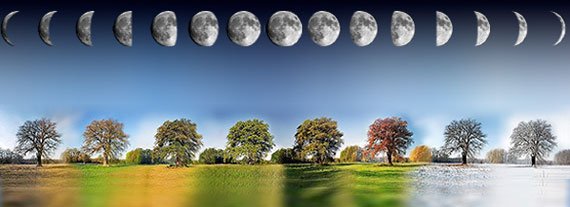Christmyths
In writing this, it is not my intention to strip anyone of their religious or spiritual beliefs. We are always viewing history through a particular lens of our own making, and it is my hope that in reading this, everyone can gain more understanding and perspective on the progression of cultural beliefs that lead to our personal prejudices.
The Wonders & Limits of Science
Whilst there is much to be celebrated within it, I am painfully aware that our modern intellect has stripped away any personal or ‘spiritual’ concept of what created the universe. We are taught that science has been successful in boiling it down to a predictable, inevitable and utterly mundane sequence:
Big bang / dark matter / hydrogen furnaces / atomic fusion / gravity / planets / chemistry / biochemistry / life / natural selection / evolution / humans / science
But we are hoodwinked through this intellectual sterilisation. The reality is that we still have zero idea ‘why’ any of these forces arise, and certainly no explanation of what caused the big bang to happen in the first place.
So, despite what our convenient, self-referencing science says, a moment’s independent thought shows that we are still left with the utter mystery of the thing. But God forbid we should contemplate any of that. To mention such a thing is scientific heresy - ironic that that term is used against religious beliefs…
Now that science has been in the business of explaining all the mystery out of things for centuries, we can justifiably treat everything (especially the Earth, animals and each other) as a cold commodity, to be extracted and accumulated, whereas previous belief structures viewed everything as inherently alive and valuable.
But this science obsession also imbues in our culture a profound arrogance, as we think we are more informed than any peoples in the past, and thus we can forget what they made of this wonderful universe. Incidentally their explanations of the sequences of creation are remarkably similar to our modern ones - they just used different language to describe them. But somehow they retained a sense of reverence for everything around them.
Previous cultures, without modern distractions, were obviously much more connected to the cycles of life. They rose with the sun, navigated with the stars and detailed the seasons with the movements of animals, patterns of plant growth and of course the sequences of moon.
This all began to change with the arrival of incrementally power-hungry invasions. Our modern calendar is a great example of these influences.
LUNAtics
The 13 moons of the yearly cycle (the most obvious means of counting through the year) - and the names of the months (moon'ths) was gradually twisted out of shape. It was reduced from 13 moons to 12 months due to unfavourable associations with Christian issues - ie; the 13th disciple was Judas, giving us an ‘unlucky 13’. This, in itself is a strike against counting natural phenomena, in favour of judgement-based ideas. And then warped further when Julius & Augustus, two of Rome's more arrogant emperors, decided their birthdays should be forever celebrated as July & August, and threw any logical counting system to the dogs, pushing SEPTember from the 7th month to the 9th month, OCTober (from 8th to 10th), NOVember (9th to 11th) and DECember (10th to 12th)...
But the most successful hijacking of all was that of the seasonal celebrations, which moved our minds from reverence of the universal clock to adherence to religious beliefs.
The locals refused to relinquish their merry-making, and so the parties had to be incorporated somehow! Thus the ruling forces kept the peasants happy by keeping the dates essentially the same, but morphed the stories to reflect these new Christian values - ie; the birth of Christ.
Solstice - The Light in the Darkness
As the sun sets and rises as far south as it will in the whole year, its arc across the sky is the smallest it will get, marking the Solstice - the shortest day - Dec 21st.
The 3 stars in Orion's belt (still called ‘the three kings’) align with Sirius (the brightest star at that time of year) and all point to the exact place on the horizon where the sun will set at its most southerly point, where for 3 days (21st to 24th Dec) its sunrise position will go no further south - a position marked by the Southern Cross. This will start to move once again when, on the 25th, it will have set just a touch further north, marking the returning of the lighter days, weeks, months, and the inevitable blooming into the spring.
Thus the three kings follow the star to the place that the saviour will be born.
His inevitable 3 days demise upon a cross, and subsequent resurrection is celebrated much later in the year, at Easter, when the days finally get longer than the nights, and usher in the renewal of spring.
This symbology of dying for 3 days, only to rise again far predates Christianity - There were many myths and legends before that share this, and many other attributes that we think of a Christian : Horus, Osiris, Mithra, Heracles, Dionysus, Tammuz, Adonis, to name but a few... And many of them even shared Christ's birth of a virgin, his miracle-bringing attributes and reverential names. And... they all died on the cross aged 30ish...
These are not ancient references to human figures, but far more ancient celestial records of astronomical phenomenon.
Here's a much better rendition than I could type... you'll have to listen through the difficult Southern drawl, and the overly dramatic tones. The narrator's intentions are more anti-religious than mine - I am just interested in the truth, rather than its interpretation and political usage.
I'm gonna sign off now, but I will try to bash out the rest of my Xmas rant before the big day itself.
In the meantime, we're wishing you a happy Solstice, and a deeper connection to the stars above, rather than just the Xmas presence below...

